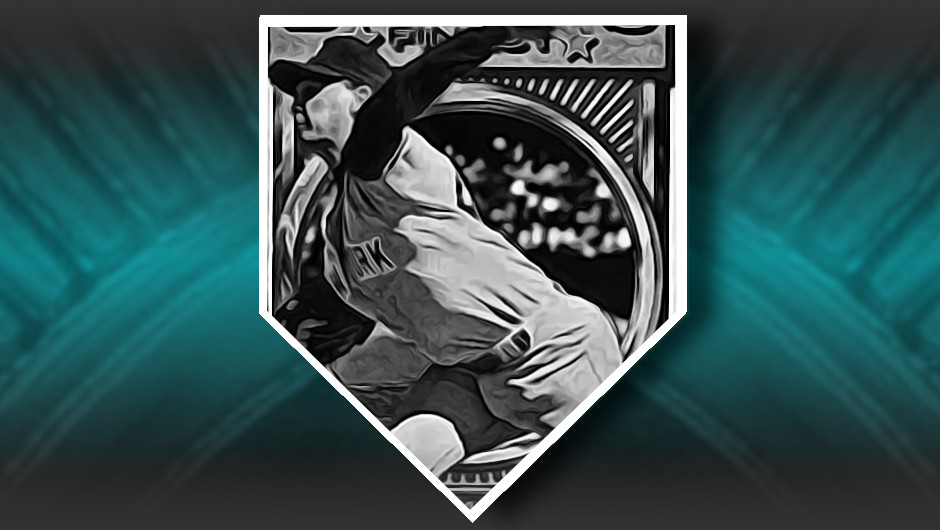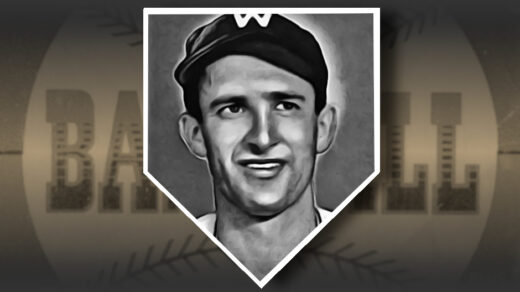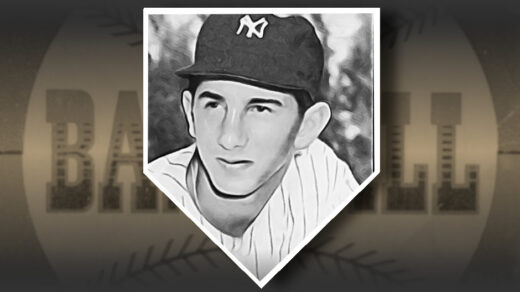Sooner or later when building a set, there will be some card that proves almost impossible to track down. For the ’93 Finest set, I propose Jimmy Key’s card #174 as one of the most likely to wreck a collector’s goal of completing the checklist. The card is one of a pair that have proven insanely tough to locate.
I have seen this card change hands an average of 3 times per year since I started recording sales data, a figure tied for the lowest among 1993 refractors. Earlier research conducted by collector Phil Gold yielded an average of less than five cards annually from 2005-2017. Less than 100 examples have been graded by PSA with the pandemic grading boom only bringing another four examples to light. This card is consistently hard to find.
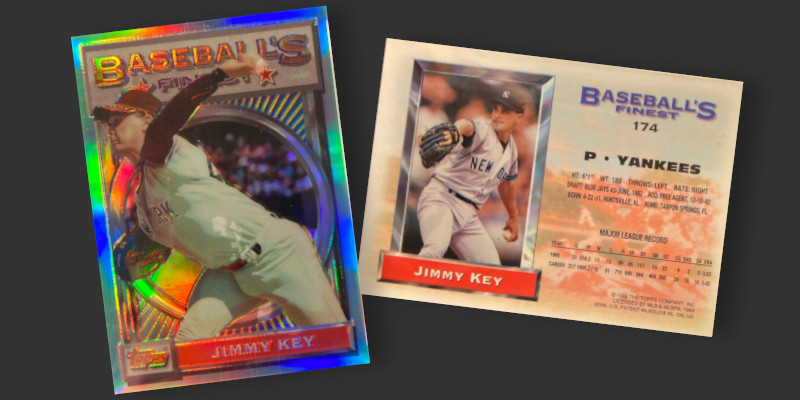
My card was acquired from a poker-playing refractor collector who broke up his set. He put out the word on PSA’s set registry that his cards were available and I reached out to inquire about this card’s availability. We quickly struck a deal and the card was on its way.
For those looking to find this card, grab one when the opportunity presents itself. The price was much higher than I would normally pay for one of these cards, but years of looking for refractors has shown it is among the few worth paying up for. A few of the registry collectors have chimed in comments about their experience locating a Jimmy Key card. The owner of a set titled “Uncle Rico’s Finest” includes a comment describing it as the “ABSOLUTE TOUGHEST or at least a dead tie with Orel Hershiser.”
Playing Career
Jimmy Key was a pitcher, not a hurler. He had major league speed on his fastball, but it wasn’t anything more than ordinary. What he did have was excellent control that could be combined with an array of secondary pitches to baffle hitters. This can be seen in his stats, where he usually beat his peers in terms of walks and hits per inning pitched (1.23 vs. 1.29 in the ’93 checklist). A quirky windup allowed him to pivot towards first to pickoff runners without incurring a balk.
Key was an instrumental part of the Blue Jays’ 1992 World Series championship, so much so that the New York Yankees signed him to a four-year deal. He won two-thirds of his Yankee starts during this period, closing out his time on the team on the winning side of a pitcher’s duel with Greg Maddux in the 1996 World Series. Injuries eventually took their toll, reducing his playing time and ending his career in 1998.
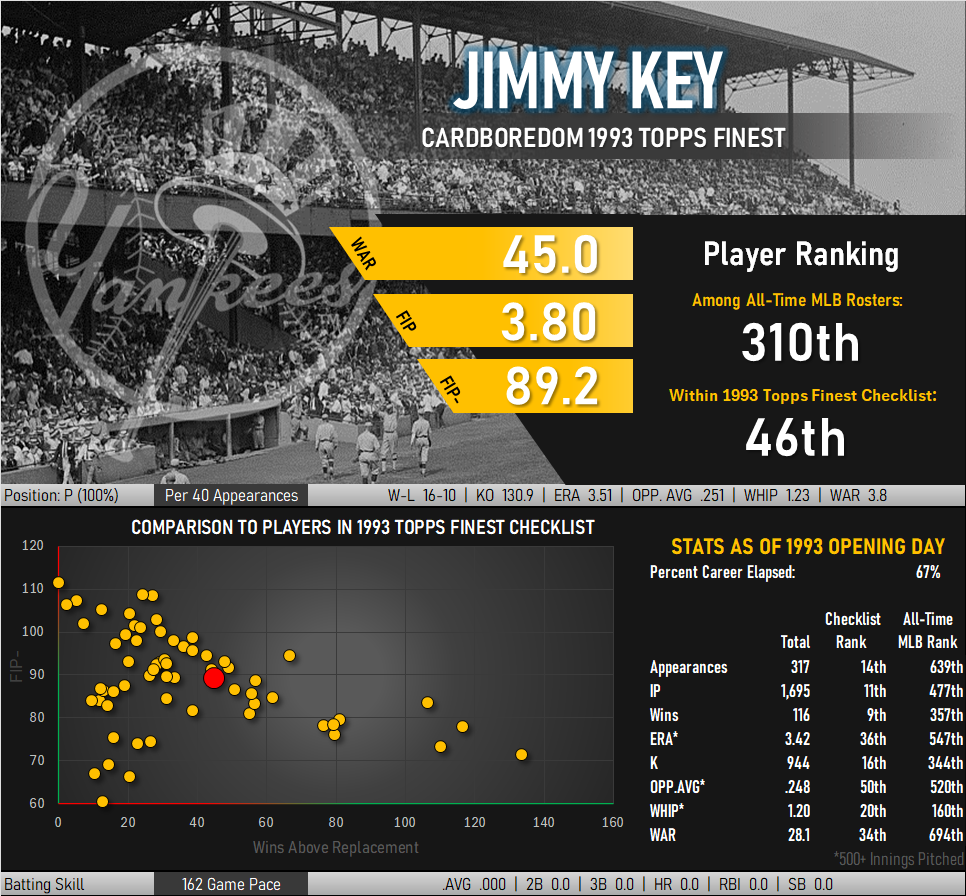
Key only came to the plate three times in 470 MLB games, which is a shame since he was known as an excellent hitter in college. Having turned down a draft offer from the Chicago White Sox out of high school, he pitched for Clemson University while serving as the team’s designated hitter between starts. He hit .359 in this role and was named as an All-ACC Player as both a pitcher and DH.
His Clemson days included one of the stranger baseball injuries I have ever come across. He was hit by a broken bat while pitching, a seemingly common enough occurrence to make the mild injury and resulting six stitches not worth noting. What generates the need for recognition is the fact that this was a game in which players used aluminum bats. How often does one of these things snap and come back at the pitcher?

Follow up note: In late 2023 a single collector made almost 20 copies of this card available for purchase. The difficulty in landing the Jimmy Key refractor may subside as these work their way through the hobby.





